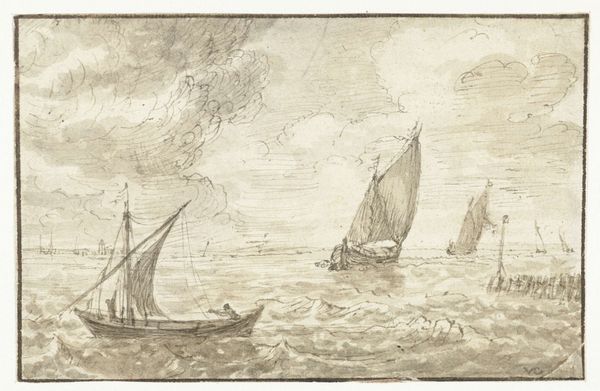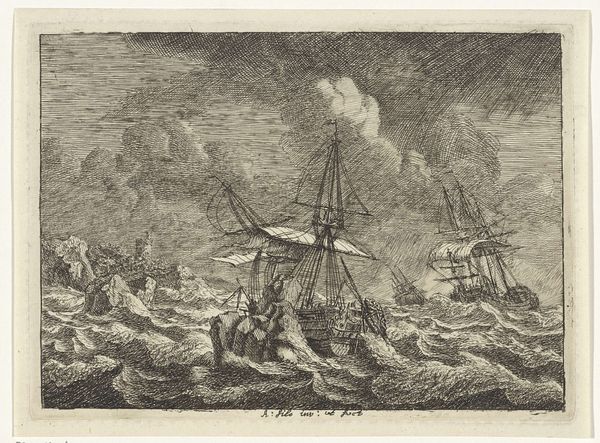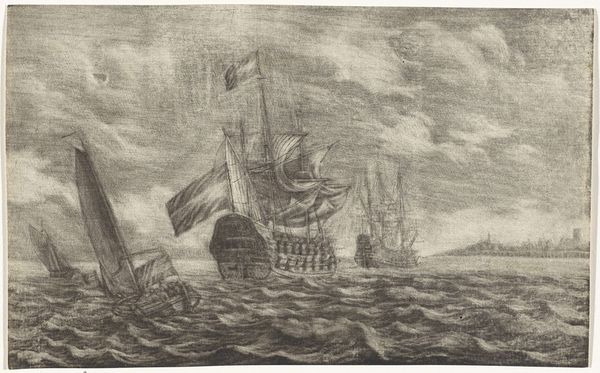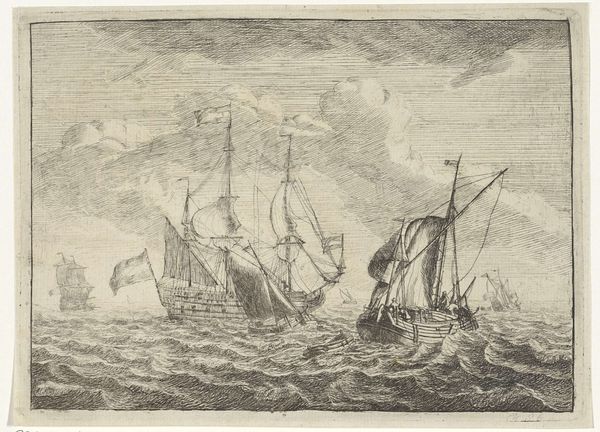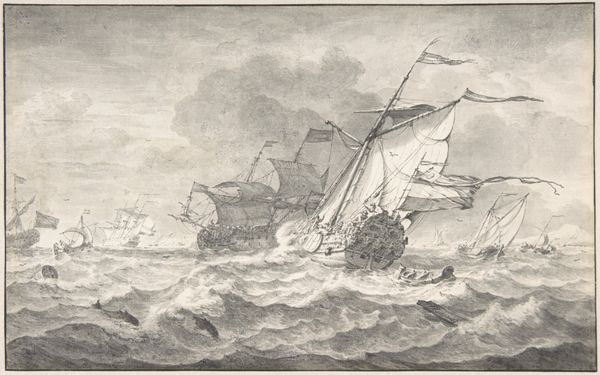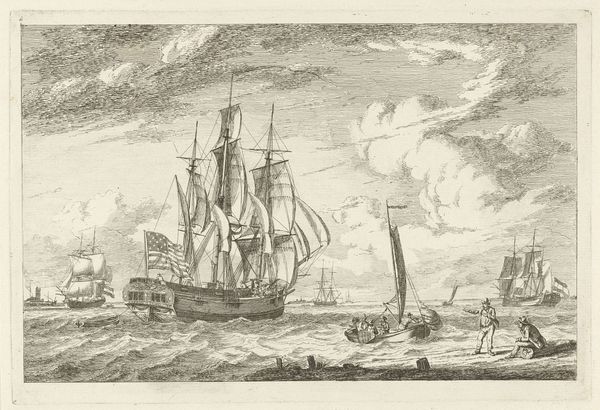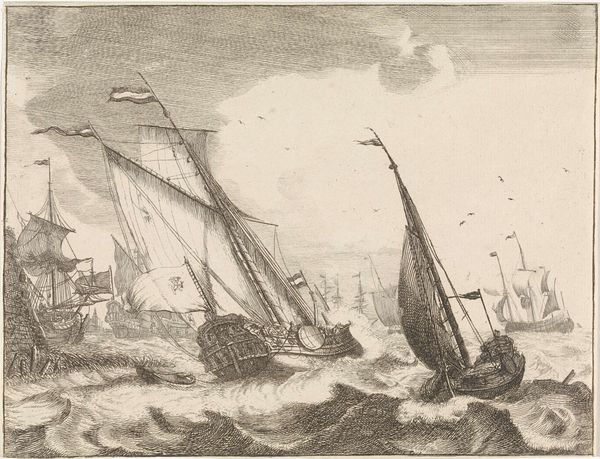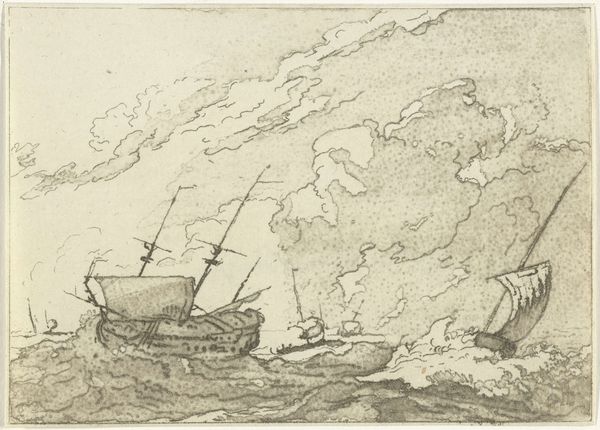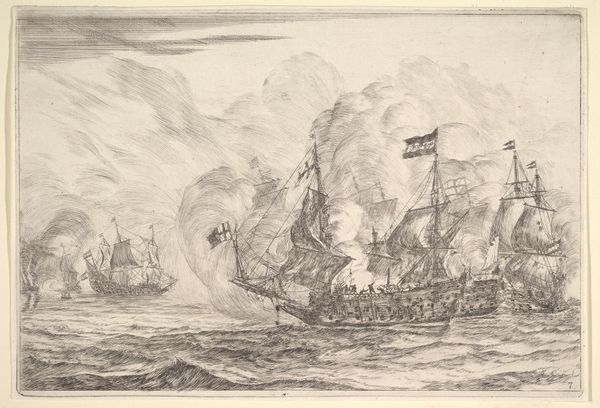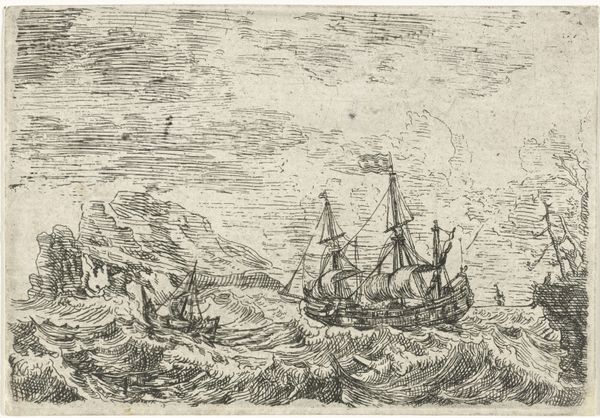
print, engraving
#
dutch-golden-age
# print
#
landscape
#
cityscape
#
engraving
Dimensions: height 151 mm, width 205 mm
Copyright: Rijks Museum: Open Domain
Editor: We're looking at "Zeegezicht met schepen," or "Seascape with Ships," a print made between 1642 and 1680, attributed to Ludwig von Siegen. I'm immediately struck by the contrast between the rough sea and the billowing sails – there's a real sense of drama. What catches your eye, viewing it from a formalist perspective? Curator: The interplay of light and shadow is immediately apparent, establishing the formal tension inherent in the work. Observe how the artist uses varied lines, creating different tonal values in the monochromatic presentation; we might almost consider it as shades of meaning as they delineate spatial depth. The foreground ships dominate, and those behind, smaller, seem almost to recede as thoughts into the distance. What meaning might be inferred from the relationship? Editor: It’s interesting how the lines almost feel chaotic in the waves, but more controlled in the sails and rigging. Is that contrast intentional, creating stability in instability? Curator: Perhaps. It’s a dance between order and disorder. Also consider the shapes formed by the negative space – particularly within the clouds and between the ship masts – this adds to the overall compositional harmony and discord as well. What does it convey, to you? Editor: I see how the shapes almost mirror each other, adding another layer. Is it pushing the limits of semiotics to look for hidden meaning in the engraving style itself? Curator: That very "style," you see, comprises lines of variable weight and character; that style may reveal not only representational reality but expressively add to the formal drama and therefore cannot be deemed outside the analytical purview. Note its texture and consider it in its full semiotic breadth. How might that contribute to the formal power of this seemingly simple seascape? Editor: That’s a fresh angle. I hadn't really thought about how the actual engraved lines create so much of the drama! Curator: Precisely. It illustrates that an aesthetic composition can transcend mere subject matter, transforming our understanding and experience into forms. Editor: That really puts the visual elements in the foreground for me. It has become less about ships and waves and more about shape, tone, and technique.
Comments
No comments
Be the first to comment and join the conversation on the ultimate creative platform.
